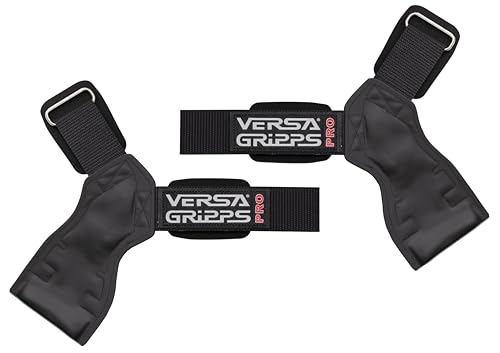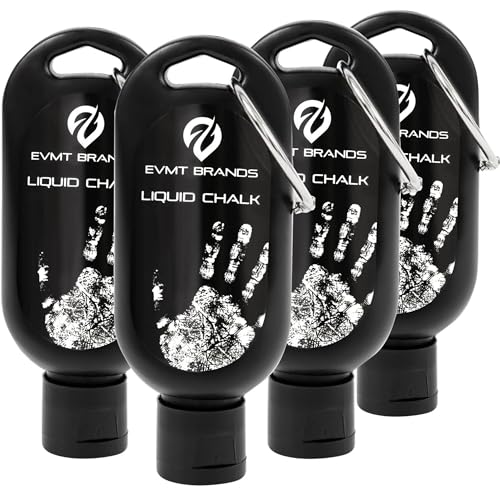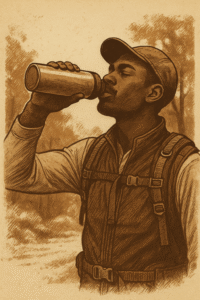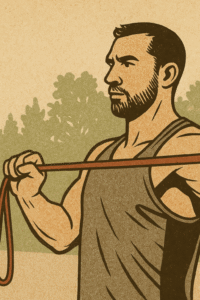Note: Some links in this post are affiliate links. That means if you pick something up through them, we may earn a small commission — at no extra cost to you. We only recommend gear and supplements we’d actually use ourselves.
When you’re pulling heavy weight, there’s a fine line between training your muscles and just fighting to hang onto the bar. That’s where lifting aids — straps, grips, chalk, and the rest — come in. Used right, they’ll help you hit your true muscular limits. Used wrong, they’ll turn into a crutch that keeps your grip from ever catching up.
Here’s how to think about lifting aids, what types actually work, and when to use them to your advantage.
🏋️♂️ The Purpose of Lifting Aids
Your grip will always be the weakest link. Most people can deadlift or row far more weight than their hands can hold for reps. Lifting aids bridge that gap — not by replacing effort, but by taking grip failure out of the equation when you want to target a muscle group directly.
For example, if your goal is to overload your lats or hamstrings, it doesn’t make sense for your grip to cut the set short. That’s when straps or grips earn their keep.
But if you’re trying to build raw pulling power, it’s better to skip them and make your grip adapt. The key is knowing when each matters.
🪢 Lifting Straps: The Classic Tool for Heavy Pulls
Lifting straps are the old-school favorite for serious lifters. They wrap around the bar and your wrist, creating a secure loop that takes tension off your hands.
They’re ideal for:
- Deadlifts
- Barbell or dumbbell rows
- Shrugs
- Romanian deadlifts (RDLs)
Most lifters will recognize the nylon Gymreapers straps — you can find them here on Amazon — which balance durability and comfort. They take a few seconds to set up right, but once wrapped, they lock you in tight and let you focus purely on the lift.
- 100% Cotton
- Imported
- NEXT LEVEL GRIP SUPPORT TO LIFT MORE WEIGHT – Our Gymreapers weight lifting straps provide neoprene padding to support y…
💡 Pro tip: Treat straps like a performance enhancer, not an all-the-time accessory. Use them when grip becomes the limiter, not before.
✋ Lifting Grips and Figure-8s
If you like the idea of straps but want something faster to throw on, lifting grips or Figure-8 straps are the upgrade.
- Versa Gripps-style grips (check current prices on Amazon) combine a wrist strap with a rubberized palm pad that hooks around the bar. They’re great for quick transitions between sets and safer if you’re doing higher-rep pulling movements.
- Figure-8 straps are even simpler: loop them around the bar and your wrist twice, and the bar can’t go anywhere. Powerlifters love them for heavy deadlifts because they eliminate almost all grip effort.
These are faster and more intuitive than traditional straps, though they tend to limit bar rotation a bit — something to keep in mind for dynamic lifts.
- MAXIMIZE YOUR WORKOUT WITH WRIST SUPPORT & QUICK RELEASE: With superior wrist support, palm protection, and a quick-rele…
- MADE IN THE USA & BUILT TOUGH: Versa Gripps are hand-crafted with custom-engineered, no-slip materials and built-in arch…
- NO-SLIP GRIPS TO HARNESS YOUR TRUE LIFTING POTENTIAL: Lift more with the revolutionary and propietary no-slip Versa Grip…
🧼 Chalk, Mixed Grip, and Hook Grip: The Alternatives
Not every lift needs equipment. Sometimes you just need friction.
- Chalk is the simplest grip enhancer — liquid or block forms both work. It dries your hands and improves bar contact. Perfect for anyone who wants to keep grip training alive while reducing slip.
- Mixed grip (one palm up, one down) is a classic powerlifting method to keep the bar from rolling. It’s great for max-effort deadlifts but can cause imbalances if used too often.
- Hook grip, popular among Olympic lifters, traps the thumb under the fingers for a vice-like hold. Brutal at first, but effective if you commit to learning it.
The idea is simple: start with these natural solutions before reaching for straps every session.
- Strong and Long Lasting – Engineered to outperform traditional powder chalk, our formula stays on longer, resists wear, …
- Superior Moisture Absorption – Our workout chalk for weightlifting absorbs sweat and keeps hands dry, ensuring a firm li…
- Mess-Free and Gym Approved – Unlike gymnastics chalk or traditional powder chalk, our superior formula leaves no mess, m…
⚖️ When to Use Lifting Aids (and When Not To)
Use lifting aids when:
- You’re doing accessory or isolation pulls where muscle fatigue, not grip fatigue, should be the limiter.
- You’re on your heaviest sets and want to push beyond your grip capacity.
- You’re cutting or training for hypertrophy and can’t afford to waste volume.
Avoid them when:
- You’re doing grip-dependent exercises like farmer’s carries, pull-ups, or warm-up sets.
- You’re trying to build forearm or grip strength directly.
- You’re learning proper pulling mechanics — straps can mask errors in setup and tension.
Think of straps as an amplifier, not a shortcut. They extend your ability to tax the target muscle — but only once your grip has already done its job.
🧠 Final Thoughts: Train Intelligently, Not Lazily
Lifting aids don’t make you weaker — misuse does. The best lifters in any gym know when to rely on them and when to ditch them.
If your goal is balanced strength, start every session raw. When you hit that point where your grip fails before your back or hamstrings do, strap up and keep progressing. That’s training with intent.






